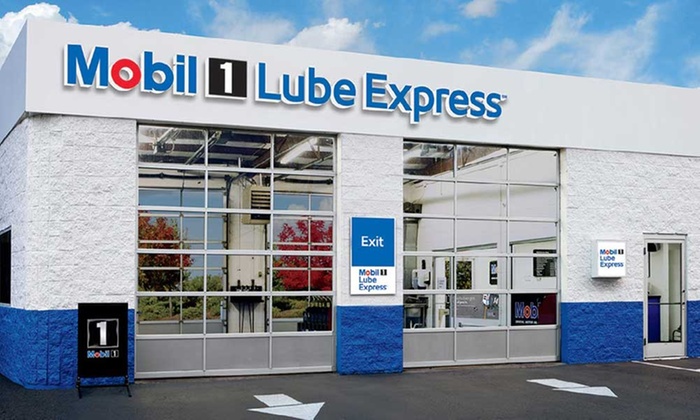What Startups Can Do To Remain Profitable
Startups who raise funds have to work really hard to justify each of the equity investment that flows into their businesses. One thing is to be surrounded by funds, another thing is to use the funds to run a profitable business. Knowing the best ways to stay afloat in tough times by making profit could be the only lifeline that saves you and your business. Below, we discuss various tested ways of remaining profitable.
Why Does Profitability Matter If You Are Already Passionate?
The owner of Nigeria’s irokoTV believes profitability is important but equally very important is cash flow.
‘‘Revenue is vanity. Profits are sanity. Cashflow is King. A lack of profits is like cancer. It will kill you slowly. A lack of cash flow is like a heart attack. You die there and then. As the bank empties. So does your dreams of startup Nirvana,’’ he says. ‘‘ Profits. There are various versions of this. You can be very ‘profitable’ and still need money to operate your organisation day-to-day. Cash flow positivity is more important.’’
According to Steven Hess a trustee and program lead at global entrepreneur network The Startup Leadership Program, ‘‘for a business to be sustainable, it must ultimately make a profit at the operating level, otherwise, it’s just a house of cards. Maybe you need a critical mass of customers to achieve supply-side economics, but it’s still a path to profit that increasingly is growing in importance.”
At What Stage Does Your Startup Really Need The Profit?
Knowing his would not only save you the stress of anxiety associated with returning an unprofitable business but will help your startup endure, gain traction and succeed with time. Jason Njoku, Nigeria’s co-founder of IrokoTV says most companies in the growth stage are unprofitable.

‘‘That’s by design,’’ he says. ‘‘It’s the way the VC-backed system works. It attempts to accelerate everything, which leads to mistakes, which leads to money wasted. That’s the downside. On the plus side, it leads to unnatural growth. Like the viral kind. Something which would ordinarily take 10 years is accelerated to 4–5 years in the VC system. The aim is to build big companies. When I mean big. I mean $100m in revenue per year big. That takes bucket loads of capital. iROKO 2011 (pre-VC) — profitable. 2012 — today (post-VC — unprofitable by design.) 2016 and beyond — we aim for cashflow positivity (not necessarily profitability).
Njoku says when startups invest for growth, it’s rarely possible in consumer or enterprise internet to do that profitably.
‘‘Building a core team, building out engineering, customer acquisition, support, brand — very few (~1–2%) major consumer internet companies managed it over the last 20 years (the history of the internet). Of the largest ones we know today, 0% were profitable in the first 5 years+. You lose a bunch of money. Until you don’t. In Nigeria, at a relatively low scale, it begins to break down quickly. You just need cash for ‘stuff’. The whole, ‘get customers’ doesn’t really go down too well as because:
1. they aren’t that many.
2. to get them it’s like breaking rocks.
3. government-related work will kill you,’’ he says.
He says the best ways to stay afloat during this period is that a ‘‘10 person team should definitely focus on cash flow and profits.’’ Internet investors are few and far between, he says, and learning the discipline to actually run a cash flow positive business is a great life skill. ‘[This is] one I strongly recommend to all young guns of today,’ he says.
The Focus Should Be On The Customer
Focusing on the customers is unarguably the easiest way of remaining profitable. “(T)he №1 thing that has made us successful by far is an obsessive-compulsive focus on the customer as opposed to obsession over the competitor,” Bezos said in a talk at the Economic Club of Washington.
“Our profitability is not our customer’s problem. We don’t take the point of view that we’re going to price products at a particular margin. We price products competitively and if that means [that] on that product that we lose money that’s ok. We need to take care of the customer and earn trust and we’ll figure out over time if we can or if we can’t ever make money with that product. If we can’t we’ll stop selling it but we’re not going to make customers pay for any of our inefficiencies.” — Jeff Bezos said.
Turning attention on what customers want or need has inspired many of Amazon’s most profitable business moves.
For example Amazon Prime. Bezos said at the talk that Amazon developed Prime, a paid subscription service for free two-day delivery because he knew consumers love free shipping. Introduced in 2005, the service drew anger for being “too good to be true” and helped underline the idea that Amazon is too inexpensive to be profitable. The message was clear: Prime is draining Amazon’s profits and its stock.
But it’s clear now that pleasing its customers, rather than bumping Amazon’s short-term bottom line, has been a shrewd business move. Amazon Prime customers spend an average of $1,300 in a year, nearly twice that of non-members. More than 100 million people globally are Prime members.
“There are two ways to build a successful company,’’ Bezos said. ‘‘One is to work very, very hard to convince customers to pay high margins [think Coca-Cola model]. The other is to work very, very hard to be able to offer customers low margins [think Costco, Amazon]. They both work. We’re firmly in the second camp. It’s difficult — you have to eliminate defects and be very efficient. But it’s also a point of view. We’d rather have a very large customer base and low margins than a small customer base and higher margins.”
Today, Amazon.com tops the list of best companies for customer support chat facilities!
Sales Are More Important
With business going, comes the hard part of the truth: actually making sales, because it is the sales that would mean profitability.
Lee Reams II, CEO, CountingWorks says that most small businesses get bogged down in tasks that have nothing to do with driving profits.
‘‘One of the easiest ways to increase profits is focusing on sales from the start,’’ he says. ‘‘The most cost-effective way to turbocharge more transactions is by going all in on using social proof to grow your business. Attracting five-star reviews, using case studies, getting your brand mentioned by bloggers and news media, are all forms of social proof that do the selling for you. Much of the buying process is now done online. If you have not maximized your digital footprint, you are not even in the game as consumers start researching product and services. Your brand needs to be present from the discovery through the intent phase of the buying process. Making social proof an integral part of your marketing plan will drive revenue growth faster than any other change.’’
Coupled with this is the need to build a sound online reputation. Denise Hilton, Founder, WebEmployed.com says that whether your business is big or small, your online reputation matters a lot.
‘‘It not only adds credibility to your business but also tells consumers and other businesses that you care about them and not just the business,’’ he says. ‘‘You need to be active on social media platforms and interact with the visitors regularly. You also need to add call-to-actions on your website and let the visitors contact you easily through web forms, landing pages, etc. Adding a blog to your website and building strategic alliances through joint venturing or cross-promotion is another effective way to build an online reputation. It could help you boost your profits a great deal. The results will slowly but surely be visible in the long term.’’
One way Ford Motor Company remains competitive with its sales is to approach price fixing more fiercely.
“Our policy is to reduce the price, extend the operations, and improve the article. The reduction in price comes first…the low price makes everybody dig for profits”. – said Henry Ford
And you could see the power of it in Ford Motor Company’s numbers:
Manage Your Taxes
Without suggesting that you evade taxes, finding a good tax expert that will help you save tax cost in your first few years of existence is very important. For instance, for Nigerian startups, there are tax incentives that are available to them, but these incentives can only avail them if they can claim them, and on time. Recalling how taxation nearly killed his business, Jason Njoku told a common story faced by most startups.
‘‘in the UK, they have Value Added Tax (VAT), at that time it was 20%, so over and above the cost of the equipment I had to pay VAT in the UK,’’ he says. ‘‘That’s fine, using the Apple bulk importation as an example, upon reaching our beloved Murtala Muhammed International Airport (MMA) the Nigerian customs officials took a particular liking to my ten (10) carefully wrapped and gloriously white ‘packages’. After a 6 hour flight I then proceeded to spend the next 4 hours arguing and debating the importation tax duties required to bring this equipment into Nigeria. All manner of calculations were initially argued amongst the customs officials themselves, then when it was looking increasingly extortionate I thought I would pitch in myself to try and not get totally screwed without at least some resistance. In the end I ended up paying, if my memory serves me right, around N700,000 ($4,600). And guess what, just to twist the knife, they were seizing my goods unless I paid there and then. I have the payment receipt of this somewhere; it’s too late for me to dig it out.’’
This is one of the several ways taxation can stifle your startup directly or indirectly. So, getting a sound tax practitioner or lawyer can be the safest way to escape the burden of over taxation.
Auditing Is The Best Strategy For Tracking Your Finance and Making Adjustment
The best way to always track your finance and expenditure is to go by auditing. Auditing will make it possible for business owners to make more effective decisions, and channel their investment appropriately. Any accounting errors would usually be bad for the future of the company.
Moira Vetter, Founder & CEO of Modo Modo Agency, a strategic marketing firm, that was recognized as a 2018 & 2017 Inc. 5000 company and a 2017 Best Places To Work, advises startups to:
Formalize monthly financial statement review with their team — Awareness is the first step to managing budgets frugally. When the person charged with keeping the books closes the books each month, schedule a meeting to sit down and review the financial statement as a group. Ask questions about line items that are going up. Look for line items that are larger than you imagined and ask questions about why.
Reinvest Profit
Knowing when to reinvest profit into the business is equally important to avoid being an all-time loser.
“Ninety percent of the time a founder should reinvest their profits back into their business because it helps them grow and means they won’t stagnate,” says Matt Jonns, founder of ucreate, a co-creator of software startups. “However, the unpredictability of startup life can make the use of profits to shore up cash flow a smart decision. Keeping this money aside for a rainy day is often just as important as reinvesting and could be the difference between survival and extinction when times are at their hardest.”
Varun Bhanot, head of business development at flexible office marketplace Hubble, shares a similar view in prioritizing growth over pocketing profits. “This enables us to grow faster than our competitors,” he says. “By plowing everything back into the business, it also means the pie is overall bigger in the end. When profits are eventually returned, they are much bigger and substantial than if dividends were given to shareholders in the earlier stages.
However, to create a balance, Matt Jonns advocates founders paying themselves a small minimum wage and using excess profits to support their lifestyle when needed.
“As long as you don’t put your cash flow at risk, spending profits in moderation is essential for your own wellbeing,” he says. “It’s something many founders struggle with, but not something they should feel guilty about.”
Patience
While it may take a long time for startups to break even, remaining patient during the first few years of this period would really be some remarkable feat startups can accomplish.
Dillon Kivo Founder and CEO of Kivo Media Group advises that success certainly won’t happen overnight, and it probably won’t happen for a couple of years.
‘‘Companies that are investing in themselves and carefully and strategically planning ahead for continued efficiency can expect to achieve profitability around their third year in business. But every company is different, and true success may take decades. Steve Jobs established Apple in 1976, but it wasn’t until 1984 that Apple got on the map with the advent of the Macintosh computer. And even then, Apple struggled until the arrival of the iMac and consumer products in the late 90s. As an entrepreneur, as a leader and as a startup founder, it’s critical to know the difference between a great idea and great company. So decide now that you’re all in, and don’t give up when the going gets tough,’’ he says.
Bottom Line
Every year, many startups take off, but only a few remain after long torturous journeys. Most of them die, of course, because they were unable to raise more funds or turn profitable. Knowing how to stay ahead of this by exploring many strategic ways of remaining profitable would be the deciding force for most startups.
Charles Rapulu Udoh

Charles Rapulu Udoh is a Lagos-based Lawyer with special focus on Business Law, Intellectual Property Rights, Entertainment and Technology Law. He is also an award-winning writer. Working for notable organizations so far has exposed him to some of industry best practices in business, finance strategies, law, dispute resolution, and data analytics both in Nigeria and across the world.




































